Cycling track racing in Australia as a spectator sport for the masses is now relegated as a sideline sport. Once one of the most popular sports in the country with spectator attendance up to 80,000 in the 1890's for major bike track races.
Bicycling in Australia was in a boom period at the beginning of the 20th century, similarly cycling for the masses has emerged as the "new golf" in the beginning of the 21st century. There are some obvious parallels between the Late Victorian - Edwardian bicycle craze and the current mass obsession with the multitude of, now in vogue, two wheeled pursuits. John Randall Mann's picture taken on A.N.A (Australian Natives Association) Day 26th of January 1898 at the velodrome adjacent to the exhibition building in Melbourne is a pivotal image in the history of cycle sport in Australia. Mann's photo features the Australain Natives Associaton Wheel Races which attracted crowds of between 40,000 and 65,000 during that era. Mann's image was taken from a viewpoint high behind the massive crowd, so far back the racers are rendered in miniature. Spectators came geed-up to witness a rough house brawl on two wheels, they were never disappointed. Reputedly arsenic and strychnine were the performance enhancement drugs of choice for athletes at that time. The prize money was high, betting and corruption 1 rife. Intense fierce-fighting entertainment enduring until the 1950's.
Shot by Mark James Daniel during the period when cycling in Australia was in a boom period. The rider and his handler mimicking a start in one of the greatest track races in the country, the Austral or one of the A.NA. wheel races.
Cycle sport remained popular as a spectator sport at venues like the Sports Arena in Surrey Hills Sydney then died a natural death with the advent of television. Today, apart from occasional well attended national and international events, when compared to the pre-50's golden era, track racing has now been relegated a non-event. The modern version of Australian track racing involves elite athletes, concealed in institute programmes, let out in front of fans when there's a medal up for grabs. A far cry from the days of 65,000 roaring cycling aficionados, punch-drunk in anticipation of an arsenic induced bare-knuckle contest on bicycles, at the Austral Wheel Race. The same scene played out across Australia on countless nights for six and a half decades.
Jim Fitzpatrick wrote in The Bicycle and The Bush, "Probably 200,000 Australians bought bicycles during the 1890's…Several million pounds were spent… It meant a large outflow of money to pay for the imported machines…this expenditure…raised cries that hardships were being felt in other areas of the economy…. as a result of the cycling craze." 2 This infatuation for cycling only manifested itself in the minds of some, for the rest of Australia they could just as well forget it existed.
In 1896 Banjo Paterson's poem Mulga Bill's Bicycle was published in newspapers around the country. Certainly there was a cycling craze at the time, yet Paterson did not share the popular view that bicycles were a noteworthy and useful invention, preferring the horse. Other Australians dismissed the bicycle, Jim Fitzpatrick wrote "But the fact that the bicycle was widely used, particularly among unionized shearers and itinerant workers, and was faster than the horse over long distances, was galling to many horsemen and squatters." 3 Today the same difference of opinion exists, cycling and bicycles are popular for many yet for others, their new horse, the motor car - is life, and bicycles have no place in this world.
Another type of cyclist existed at the beginning of the 20th century, the camera toting cycle tourist. Mark James Daniel photographed his family and friends in daily life, his photographs are now archived at the State Library of Victoria. Daniel created a set of cycling photographs shot between 1898 and 1907, his images providing an intimate view of one man’s journey on two wheels, during the first Australian cycling boom. Daniel’s pictures included portraits of people with their bicycles, trips out from Melbourne on dirt roads to destinations like Marysville and Healsville, men repairing punctures, Easter bicycling tours, life on two wheels in country Victoria. One image depicts “Batten, Smith, Buchanan & Tony at Bayswater in 1899″, clowning around in front of the camera. The key image from the set shows one of the men mounted on a bicycle as if ready at the start line on a velodrome, held up by his “coach” another standing on a log in the background. The image of John Bange comes to mind here and Paterson’s poem Mulga Bill’s Bicycle.
The Batten, Smith, Buchanan & Tony at Bayswater image contains the metaphor for the state of cycling in Australia at the time. First the likeness to the bush setting at Eaglehawk and a poem written by a man inclined to discard bicycles in favour of the horse. One actor mounted on a bicycle at an imaginary start line, like a focused racing man hell bent on winning. The group simultaneously involved in the fun of the outing, representative of the masses of cyclo tourists, trans continental bicycle explorers and urban cycle enthusiasts. In 2012 the neo Australian cycle-boom mimics aspects of the scene played out by four men out for a laugh on two wheels at Bayswater on the second of September 1899.
1,2,3 Fitzpatrick, J. The Bicycle and The Bush Oxford Press 1980. pp.152-154, 236
All Images by Mark James Daniel 1867-1949, located at State Library of Victoria Series: Mark Daniel – photographs of family, friends, scenes and events in Melbourne, 1898-1907. State Library Of Victoria


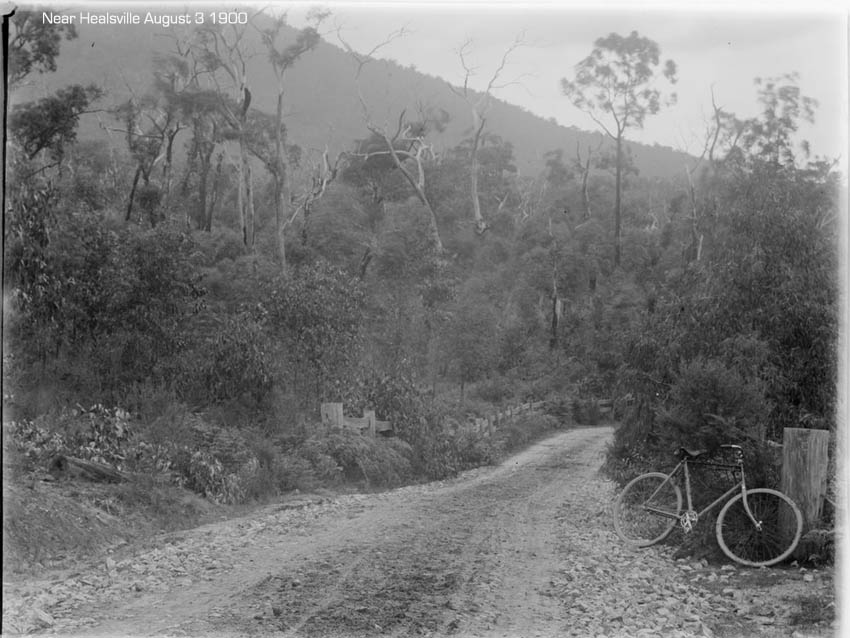

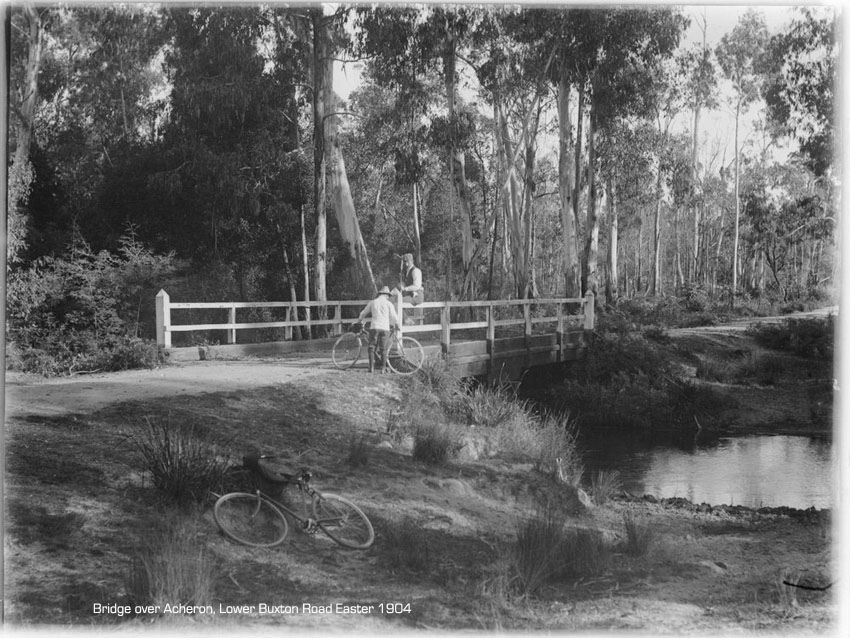

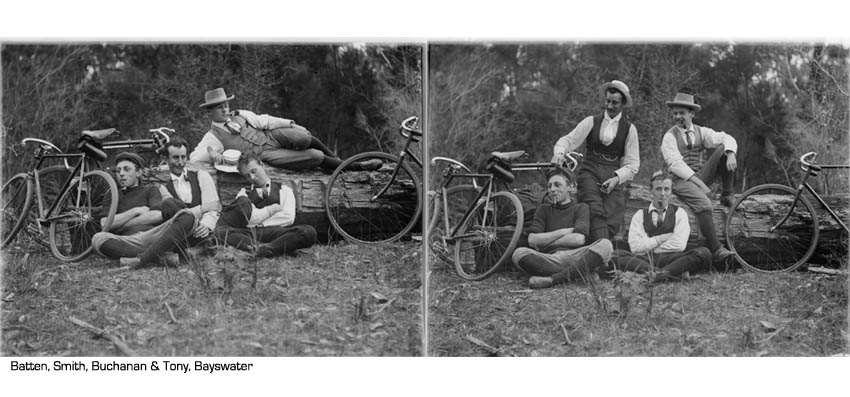

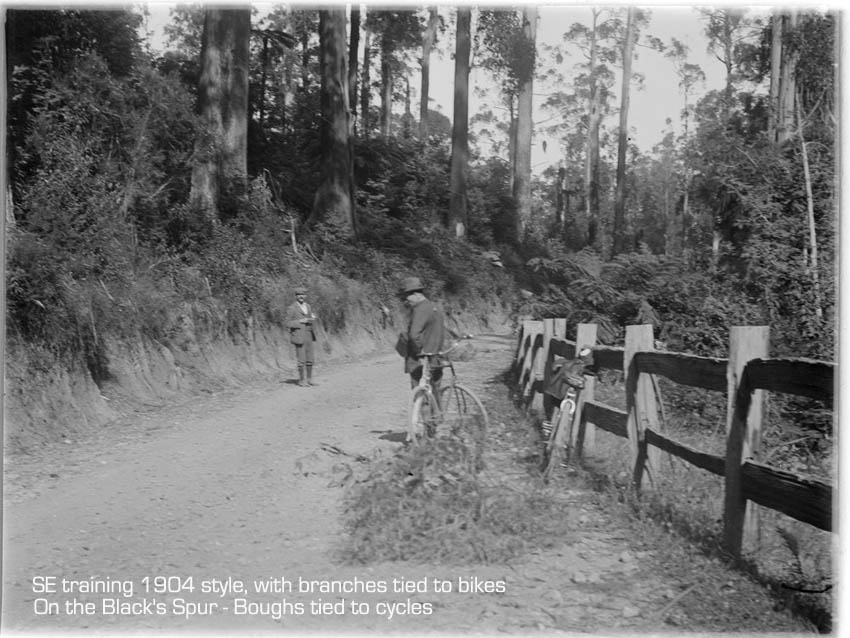
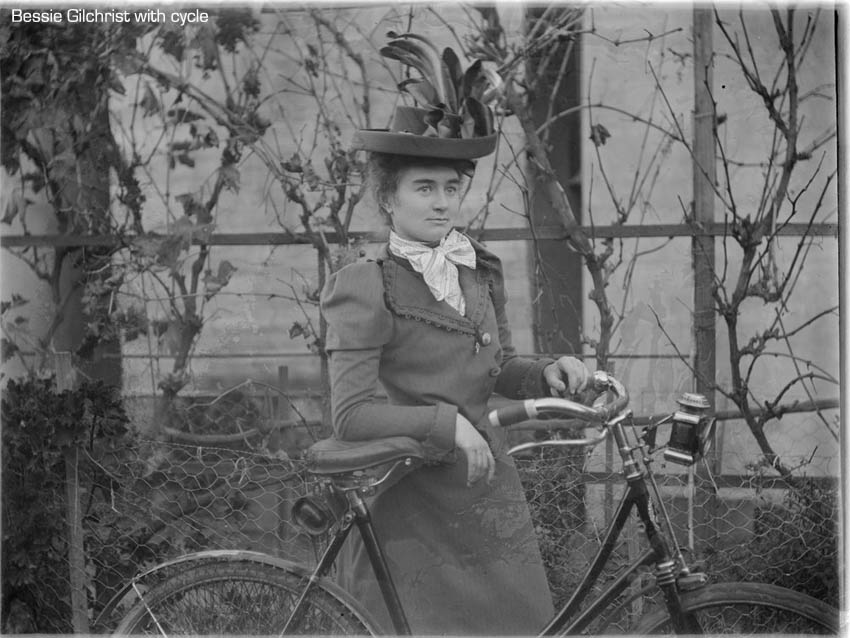
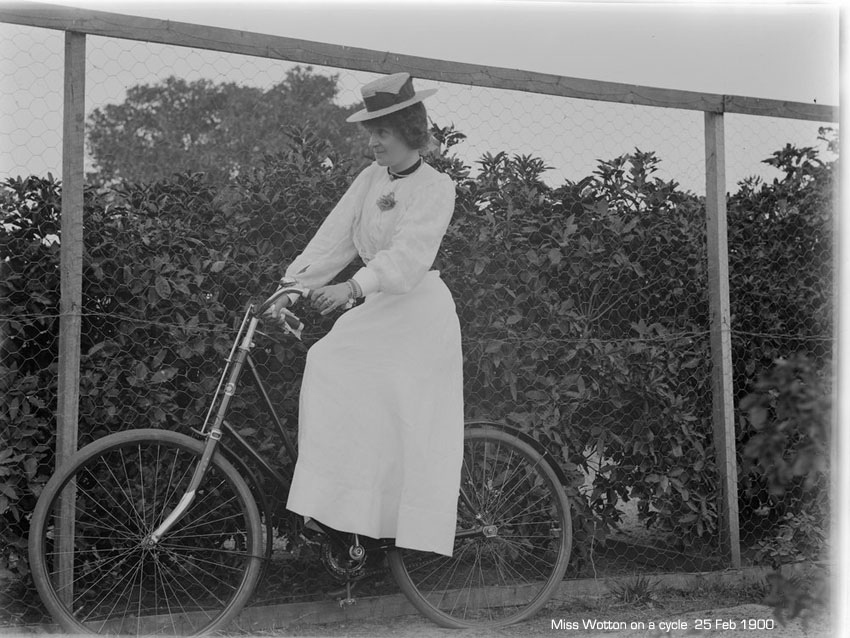
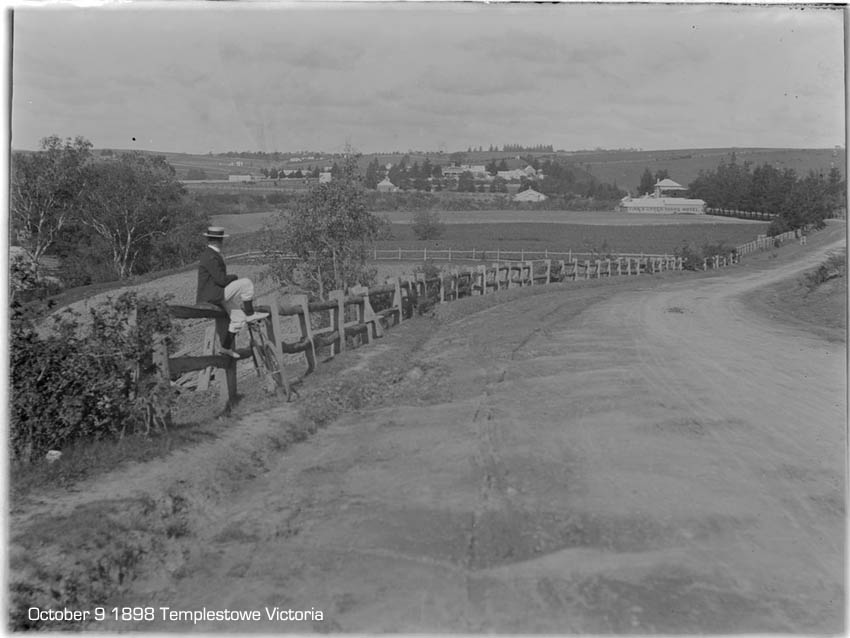
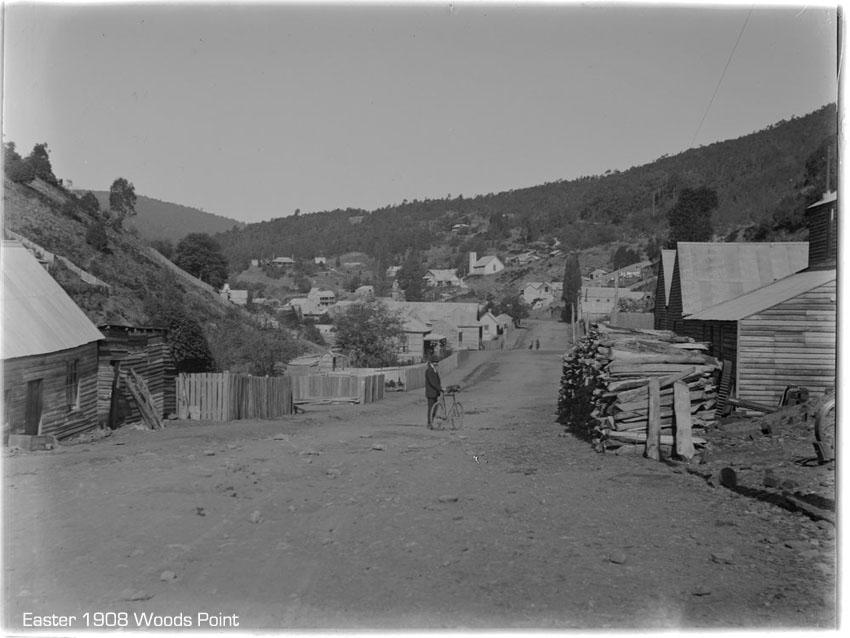

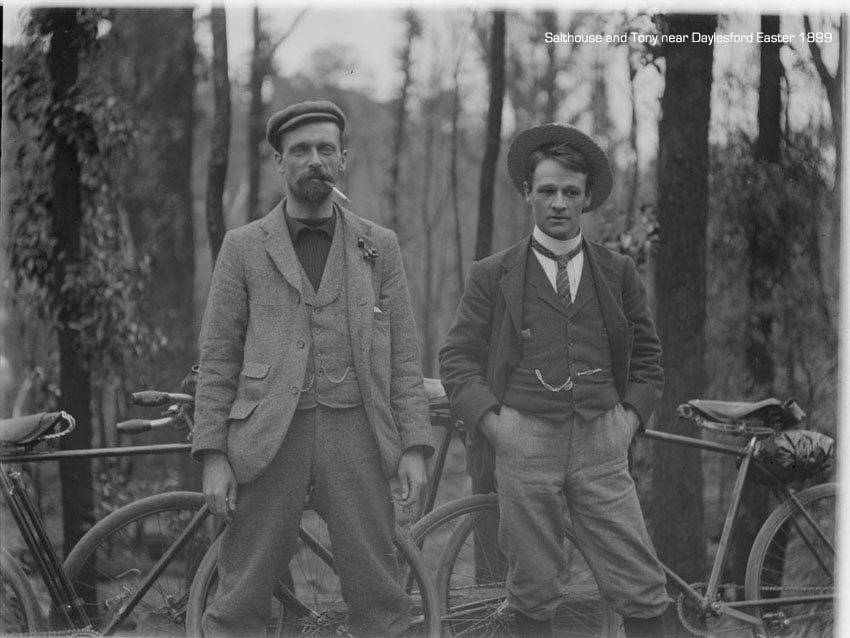
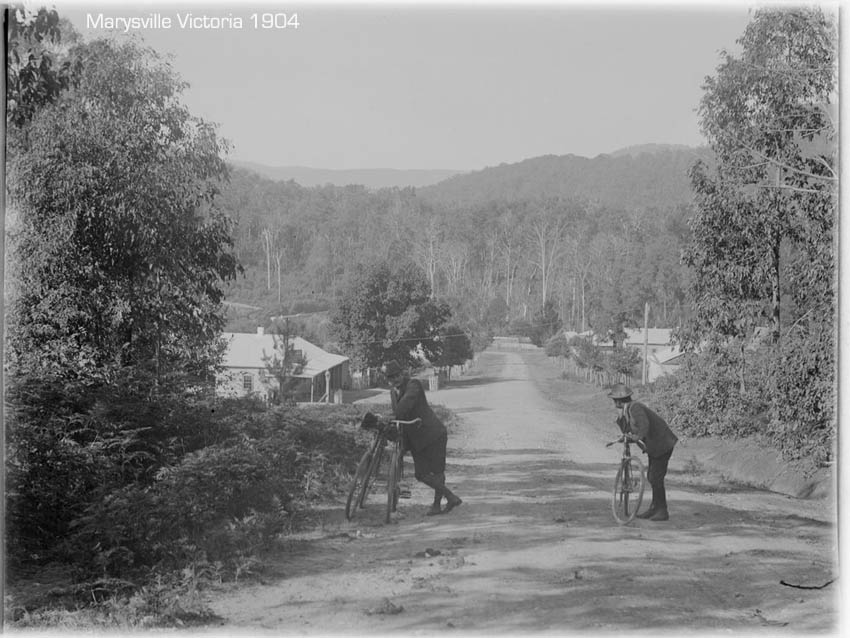
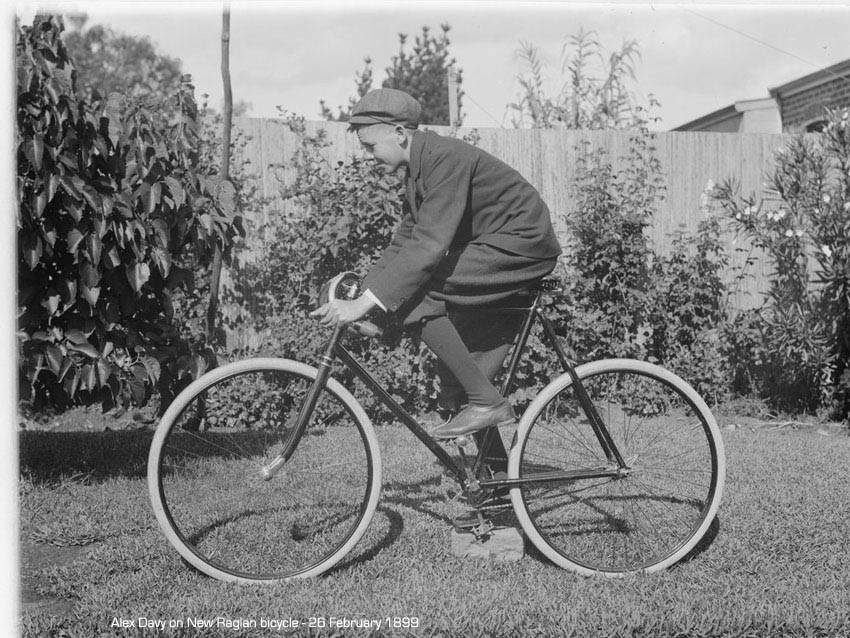
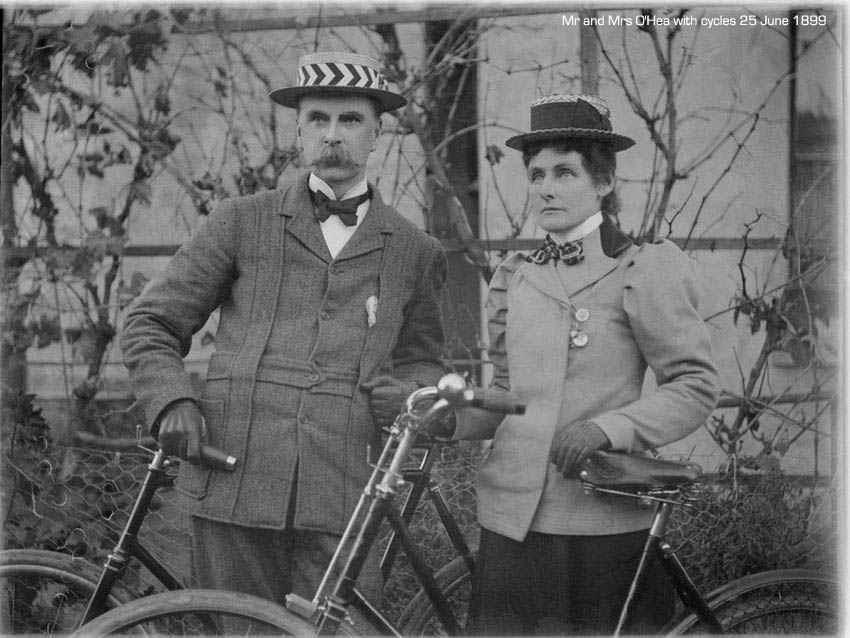
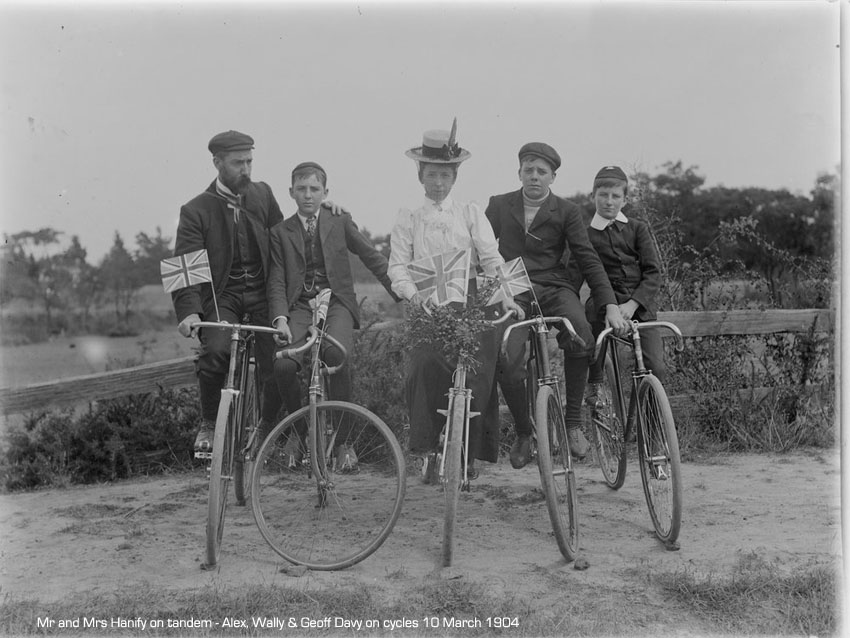
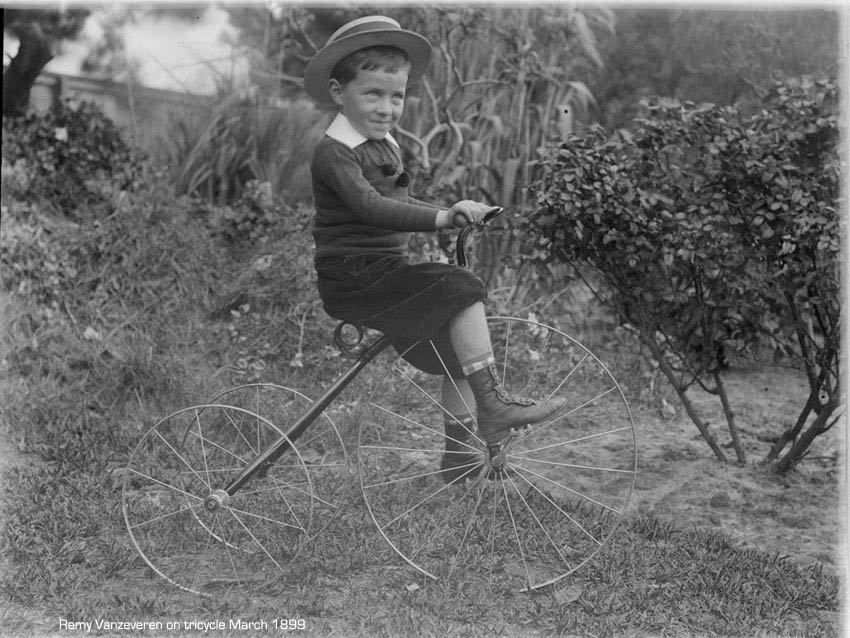
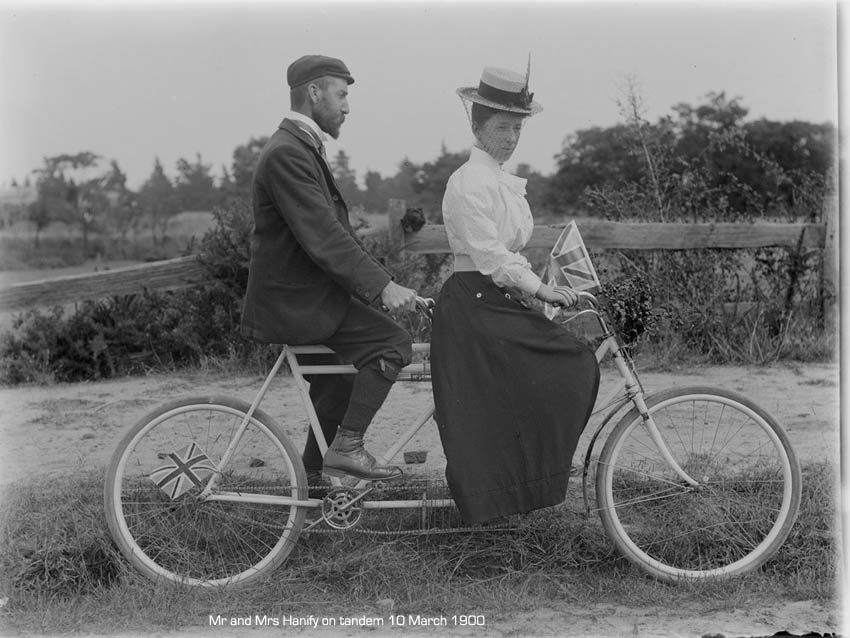











The A.N.A bicycle races at the Melbourne Exhibition grounds, Carlton were the biggest show in town.